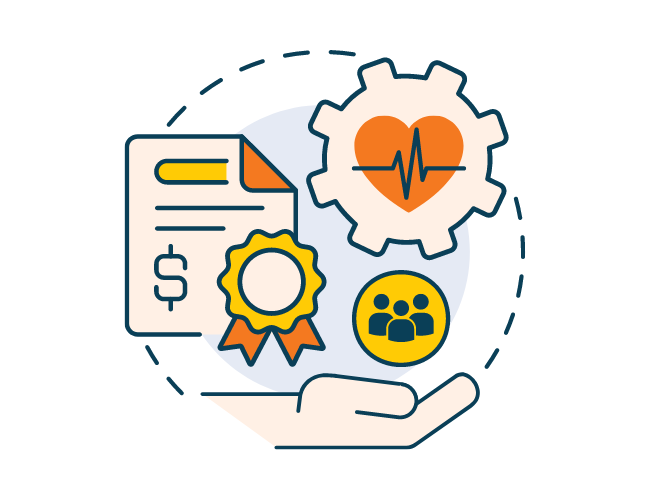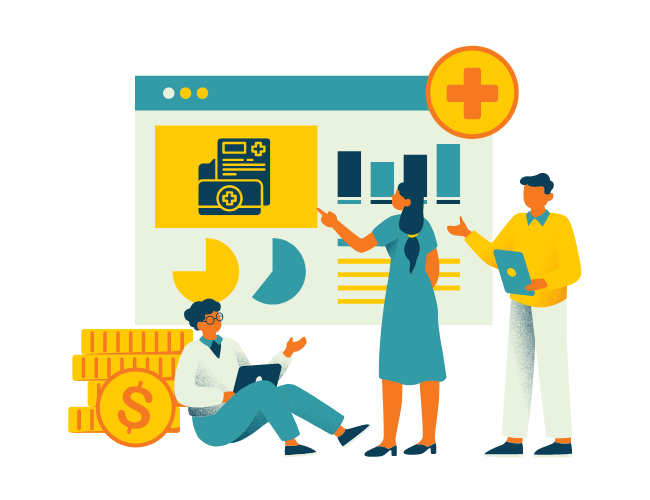Recent findings from a Forbes Advisor survey paint a rather bleak picture: across baby boomers, Gen X, millennials, and Gen Z, job satisfaction seems to be in short supply. In fact, just 16.2% of all respondents gave their job satisfaction a score of eight or above. This is especially alarming when considering the rising prominence of younger generations in the workforce.
While job satisfaction is a multifaceted issue, it’s undeniable that benefits play a pivotal role in shaping the work experience across generations. They aren’t just the cherry on top; they’re part of the main course. As the landscape of the workforce continues to diversify, tailoring benefits to meet the distinct needs of each generation becomes not just a consideration, but a necessity.
This article covers the survey’s key findings, including generational satisfaction scores and top-ranked benefits, and presents strategic approaches to designing benefits that truly resonate.
Pressed for time? Here’s a quick summary…
- Job satisfaction disparities: Gen Z and millennials report the lowest satisfaction scores. As they’re the future workforce, addressing their needs is essential.
- Flexibility is paramount: All generations, especially Millennials and Gen Z, highly value flexible work arrangements. Tailored work setups can significantly elevate job satisfaction.
- Mental health matters: A holistic approach to mental well-being is crucial, with 62% seeing it as a key job satisfaction factor. Generational needs vary—baby boomers and millennials prefer dedicated relaxation spaces, while Gen Z favors therapy and workshops.
- Lifelong learning: Professional growth opportunities are a universal desire. Digital platforms and cross-departmental training sessions are in high demand. With AI’s rising role in workplaces, AI-focused upskilling programs are also gaining traction.
Key Findings At A Glance: Generational Differences & Job Satisfaction
By 2030, millennials and Gen Z
are set to be the majority,
making up 58% of the workforce.
The survey revealed self-reported satisfaction scores by generation:
- Baby boomers (born 1946-1964): 5.6/10
- Gen X (born 1965-1980): 6.6 /10
- Millennials (born 1981-1996): 4.6/10
- Gen Z (born 1997-2012): 5.2/10
It’s quite telling that only 16.2% of all participants felt positive enough to give their job satisfaction a high mark of eight or more. But what really stands out are the lower scores from millennials and Gen Z. As these groups gear up to become the backbone of the workforce, keeping them happy and motivated is key. After all, when they thrive, businesses tend to do well too.
Top-Ranked Benefits For A Multi-Generational Workforce
Employer-provided benefits profoundly influence the perceived value of a job and the level of trust among employees. The survey results reveal three primary benefits that resonate with a multi-generational workforce.

1. Flexibility
Flexibility is the cornerstone of job satisfaction across all generations, with flexible work arrangements emerging as the top-ranked benefit (79%). Many millennials and some of the Gen Z generation are now parents to young children. Balancing work and childcare becomes a tightrope walk, especially without flexible work options. Because of this, millennials (84%) and Gen Z (83%) particularly cherish the ability to adapt their work schedules and locations to their lifestyles.
Considering the low levels of job satisfaction among this group, these findings take on added significance. The data paints a clear picture: by adjusting work models to resonate with these generations, there’s potential to not only boost their contentment but also invigorate the entire workforce.
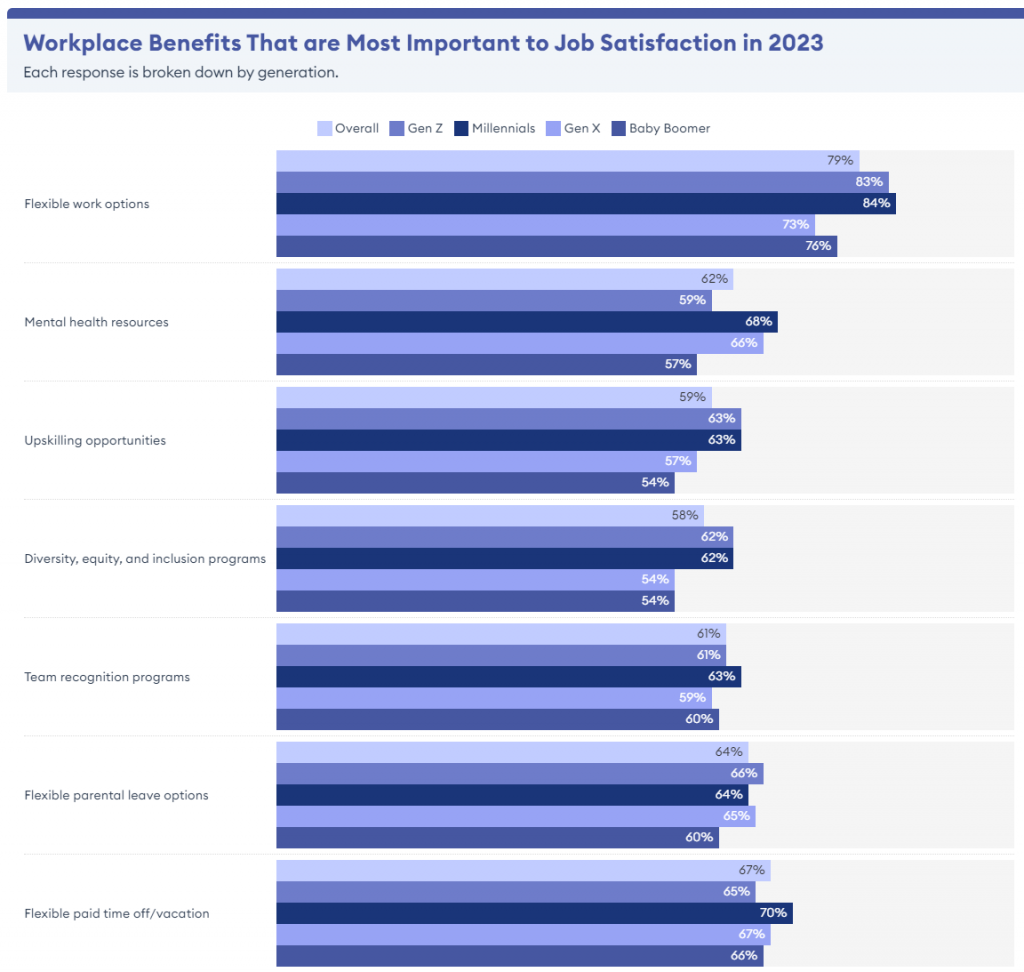
Recommendation:
Recognize the pivotal role of flexibility in fostering employee satisfaction, transcending generational boundaries. Tailor work arrangements to accommodate diverse lifestyles and preferences, including options for remote work, flexible hours, and adaptable work environments.
2. Mental Health Resources
Mental health isn’t just a topic of discussion—it’s a real, pressing concern for many employees. A deeper look reveals:
- 34% feel underappreciated.
- 36% grapple with stress.
- 26% are struggling with anxiety.
- 20% are battling burnout.
A significant 62% of respondents identify robust mental health support as a pivotal benefit for job satisfaction. But it’s not just about providing resources—it’s about genuinely understanding and addressing the challenges employees face. When emotional well-being is prioritized, employees are not only happier but also more engaged, resilient, and efficient.
- As for the type of support desired, generational nuances emerge:
- Both Baby Boomers and millennials find comfort in dedicated spaces for mental well-being.
- Gen Z leans into proactive measures like workplace therapy and mental health workshops.
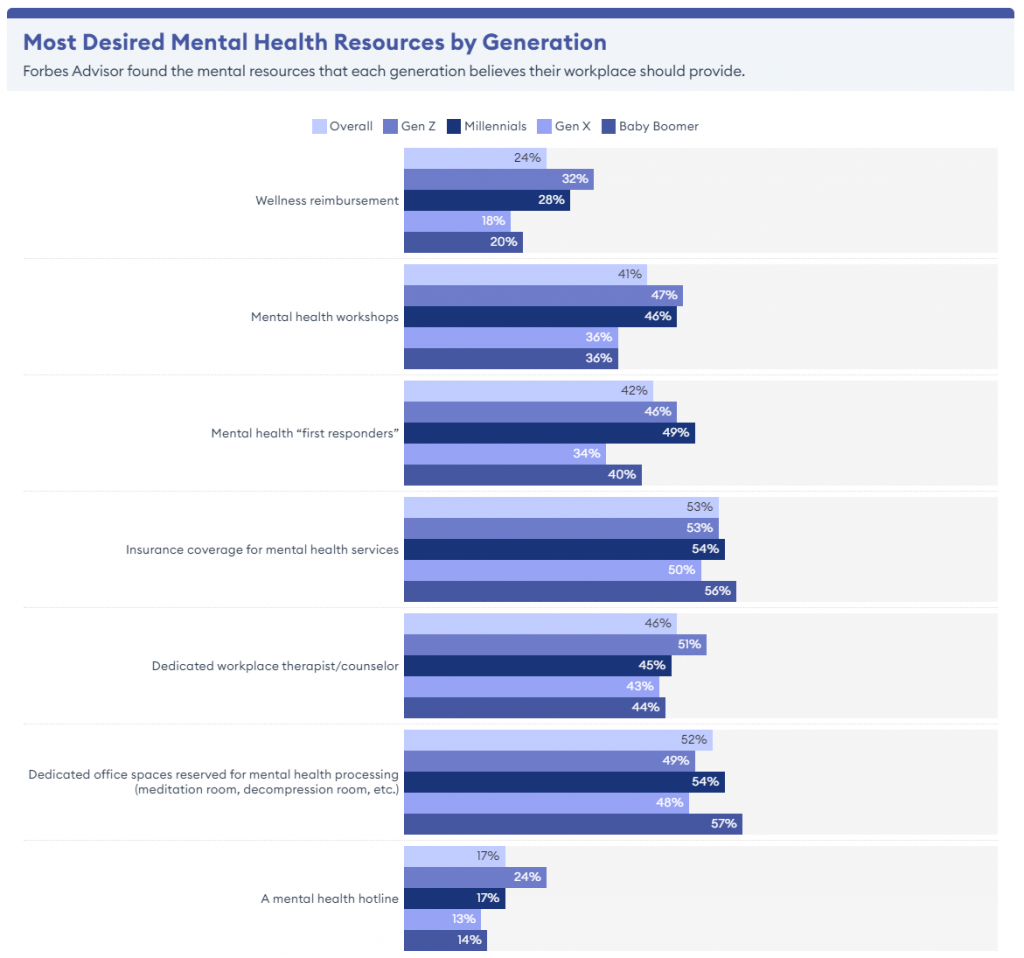
Recommendation:
- Comprehensive Well-Being: Implement a holistic employee wellness program that addresses all dimensions of well-being.
- Tailored Offerings: Cater to varying generational needs. For instance, dedicated mental relaxation spaces can benefit Baby Boomers and millennials, while Gen Z might appreciate workshops and therapy sessions. Introducing a Lifestyle Spending Account can offer another layer of personalization, allowing employees to choose well-being initiatives that best fit their needs.
3. Professional Development Opportunities
Across generations, there’s a shared enthusiasm for continued learning and professional growth. This collective desire is evident in the preference for digital learning environments (59%) and companywide trainings from other departments (58%). Such findings underscore the importance of collaborative, technology-driven learning experiences and broadening horizons within the organization.
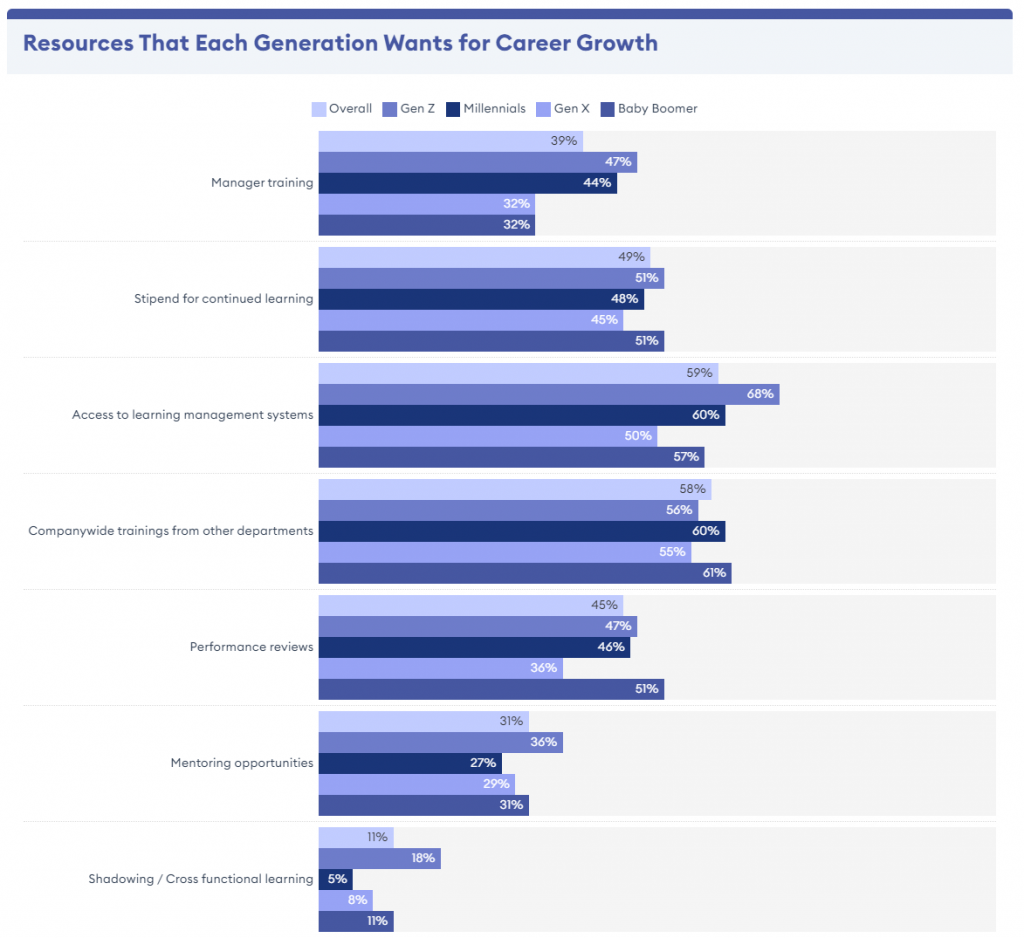
Recommendation:
- Growth Empowerment: Launch training initiatives that span the entire organization. By opening doors to learning from various departments, employees can diversify their skill sets, enriching both their personal journey and the collective expertise of the company.
- Digital Proficiency: Access to learning management systems is vital in this digital age. As artificial intelligence becomes integral to the workplace, offering internal AI upskilling programs can be a key factor in employee retention, as four in 10 workers consider switching jobs for better learning and development opportunities.






